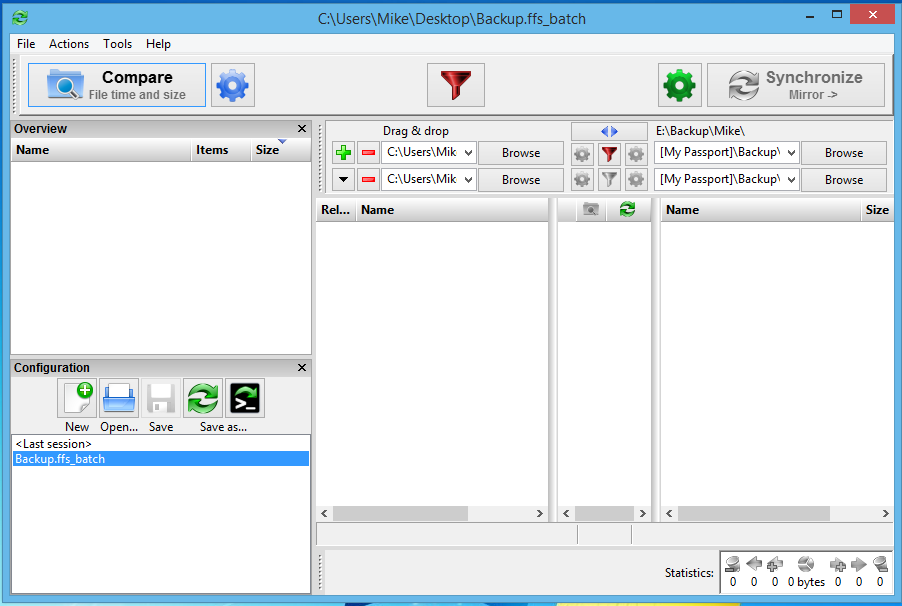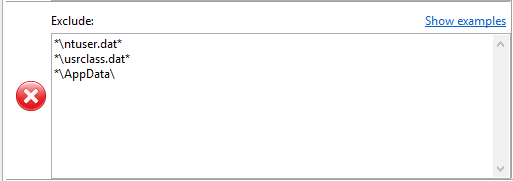Backup using FreeFileSync

FreeFileSynch (FFS) can be directly downloaded and installed from the author’s site: http://www.freefilesync.org/. FFS is a free Open Source application for backing up and restoring user files and folders on Windows, Linux and Mac operating systems. One of the major benefits is that once the first backup has been completed only changes are backed up making subsequent backups faster. Also it supports USB backup drive names, e.g. [My Passport] as targets rather than relying on a drive letter which can change depending on which port the USB cable is plugged into,
For Vista and Windows 7+ ensure that once installed the FFS executable Properties/Compatibility/Settings is set to run “as administrator”. This way other home folders can be backed up.
FFS has four modes of operation:
- Two-Way Sync (L <=> R) – synchronise files in both directions
- Mirror Sync (L => R) – mirror what’s on the left to the right
- Update (copy new and updated files (L => R) – like Mirror but deleted files on left are preserved on the right.
- Custom – can be a mix of 1-3.
L = Left and R= Right. where Left is normally the source and Right the backup drive
I would recommend the Mirror mode if happy with files that are deleted on the host are deleted on the backup. Otherwise, if paranoid about keeping all deleted files, elect for the Update option where deleted files are preserved even when deleted on the host side. Use the Sync option with care. If you manually delete all files in your backup folder and Sync you could end up erasing all files your trying to back up!

FFS works by adding folder pairs as shown above. In this example two folder pairs have been added as follows:
| Left (source) |
Right (destination) |
| C:\Users\Mike\ | [My passport]\Backup\Mike |
| C:\Users\Mike\AppData\Local\Microsoft\Windows Mail | [My passport]\Backup\Windows Mail |
The first folder pair backs up the user’s home folder with local exclusions, which are set by clicking on the funnel icon (displayed red when exceptions set) between left and right folders as is shown below:
These exceptions excludes the user’s hidden system security files (ntuser.dat, usrclass.dat) and Appdata folder. These are not logically part of the what most user’s consider their data, e.g. documents, pictures, movies, etc. AppData folders can contain 1000’s of application specific files which are tricky to restore and increase back up time. Also If restored incorrectly they can cause serious problems. The exception to this rule are certain AppData folders which contain mail e.g. Windows Mail or Outlook or Thunderbird. To capture these additional folder pairs need to be added.
The second folder pair contains the AppData’s Windows Mail subfolder. Additional folder pairs must be added for each AppData subfolder which contains user data, e.g. Firefox or Google profile. Usually it is only mail data that has to be backed up as a second pair. Most user data lies outside of the AppData folder within the user’s home folder.
Once satisfied the folder pairs are correct and backup mode selected save the backup profile to a FFS batch job file on the desktop and call it Backup. When saving the batch file you have options to disable error handling. logging and run minimised.
To run the backup the user simply needs to double-click the Backup icon (shown above) on the desktop.
Note: the destination “[My Passport]\Backup\User” and additional folder pair target folders must be created manually on the backup device before running the batch file. FFS does not do this automatically on the fly and will fail with an error message saying it can’t find the destination folder. Its a small price to pay for a great backup program.
Batch Files
For the tech savvy shown below are sample contents of Backup FFS batch files for backing-up a Windows 7/8 user’s Home directory to a USB Passport drive called “[My Passport]”. So long as you stick to the logic shown you can edit these directly with any text editor such as Notepad.
Sample 1 Back-up home folder only
<FolderPairs>
<Pair>
<Left>C:\Users\User</Left>
<Right>[My Passport]\Backup\User</Right>
</Pair>
</FolderPairs>
For XP substitute “<Left>C:\Documents and Setting\User</Left>”
Sample 2 Back-up home folder excluding Appdata but including specific AppData sub-folders
<FolderPairs>
<Pair>
<Left>C:\Users\User</Left>
<Right>[My Passport]\Backup\User</Right>
<LocalFilter>
<Include>
<Item>*</Item>
</Include>
<Exclude>
<Item>*\AppData\</Item>
<Item>*\Application Data\</Item>
</Exclude>
<TimeSpan Type=”None”>0</TimeSpan>
<SizeMin Unit=”None”>0</SizeMin>
<SizeMax Unit=”None”>0</SizeMax>
</LocalFilter>
</Pair>
<Pair>
<Left>C:\Users\User\AppData\Local\Thunderbird</Left>
<Right>[My Passport]\Backup\Thunderbird</Right>
</Pair>
</FolderPairs>
Notes:
- For XP User folder substitute <Left>C:\Documents and Settings\User</Left> and Application folder substitute <Left>C:\Documents and Settings\User\Application Data\Thunderbird</Left>
- The destination directories on the back-up device must be created manually. FFS does not automatically create them. Otherwise you’ll get an error message when running the backup saying they can’t be found.
- The batch file(s) is/are best placed on the user’s desktop for easy access and run manually on a regular basis
- For Windows 7 and 8 ensure that in the FFS.exe application > Properties > Compatibility tab “Run this program as Administrator” checkbox is checked.


